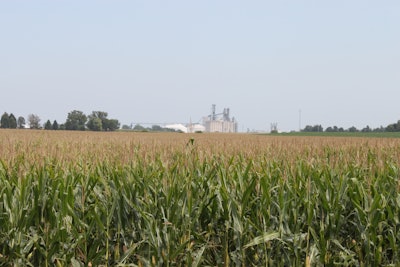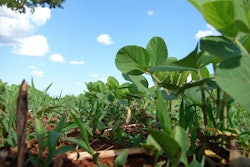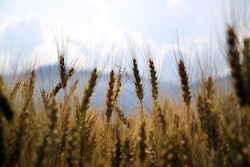
USDA’s recent Agricultural Outlook Forum presented a first look at the supply and demand projections for cotton and grains and oilseeds for the 2020/2021 crop year.
The largest annual meeting of USDA, the forum is also the venue for USDA’s chief economist to unveil the department’s projections for U.S. commodity markets and trade.
The balance sheet projections from the forum will be updated in the May World Agricultural Supply and Demand Estimates report and will also include acreage information from USDA’s March Prospective Plantings report, which will include surveyed farmers’ 2020 planting intentions.
2020 Acreage and Yield Expectations
The four principle crops, corn, soybeans, wheat and cotton, account for a projected 236.5 million total planted acres in 2020.
Corn planted acres are estimated to increase to 94 million acres, a 4.8% increase from 2019’s 89.7 million acres, which followed a record-high amount of acreage prevented from being planted, i.e., Prevent Plantings Set Record in 2019 at 20 Million Acres.
Returning to 94 million acres would align corn planting with 2016 planting levels but yield expectations of 178.5 bushels per acres indicate 2020 would put corn production at a record 14.5 billion bushels.
USDA projected soybean planted acres to increase to 85 million acres in 2020, significantly above the 76.1 million planted in 2019 but short of peak soybean planted acres in 2017, when 90.2 million acres of soybeans were planted. The national average soybean yield is currently projected at 49.8 bushels per acre, putting total estimated production at 4.2 billion bushels, up 18% percent from 2019.
Projected planted acres of wheat are estimated at 45 million acres in 2020. This estimate would lower planted acres from 2019 levels when wheat planted acres were at 45.2 million acres and continue the downward trend in wheat plantings. The lowest number of planted wheat acres on record is projected for 2020. In addition to the low estimates in wheat acres, wheat yields are projected lower at 48.2 bushels per acre in 2020, compared to 2019 when yields were 51.7 bushels per acre. At 1.8 billion bushels, total wheat production in 2020 is anticipated to be down 4.4% from 2019, when wheat production was 1.9 billion bushels.
The cotton planted acres outlook decreases overall planted acres from 13.74 million acres in 2019 to 12.5 million acres, a drop of 9%. The 14.1 million planted acres in 2018 were the largest amount of planted cotton acres since 2011. Cotton production in 2020 is estimated to decrease 3%, from 20.1 million 480-pound bales to 19.5 million 480-pound bales. However, the national average cotton yield is anticipated to increase from 817 pounds per acre in 2019 to 855 pounds per acre in 2020. Figure 1 highlights planted acreage for corn, cotton, soybeans and wheat.

2020 Demand Estimates
USDA forecasts total corn use to be up 4.8% from 2019, when total use was 14.07 billion bushels, to 14.74 billion bushels in 2020. However, global competition has increased from production growth in places like Argentina, Brazil and Ukraine, which, alongside a strong U.S. dollar, has continued to weaken the U.S.’s ability to expand global corn export market share.
Corn exports are projected to be up more than 18% from current 2019 estimates of 1.7 billion bushels to 2.1 billion bushels in 2020. At 5.45 billion bushels, ethanol use is anticipated to slightly increase by 25 million bushels for 2020. The demand improvement in corn is not expected to keep pace with the supply increases, and as a result, ending stocks for corn are projected to increase to a record-high 2.6 billion bushels at the close of 2020. The stocks-to-use ratio for corn is about 18%. As a result, early corn price expectations for 2020 indicate $3.60 per bushel, down 25 cents from the current crop, and importantly, below the Price Loss Coverage support price of $3.70 per bushel.
Soybean total use is projected to increase by 6.3% from 2019’s 4.05 billion bushels to 4.3 billion bushels, a record high in soybean total use. Soybean trade exports are projected to increase 12% for 2020 to 2.05 billion bushels from 1.8 billion bushels in 2019. Importantly, soybean exports could improve as more information on Chinese purchase commitments and accumulated exports become available.
The uptick in exports, as well as continued improvement in domestic crushing, is expected to push ending stocks lower in 2020 to 320 million bushels, down from 425 million bushels in 2019, and resulting in a stocks-to-use ratio of 7.4% in 2020. Ahead of actual trade deal commitment purchases, soybean prices are projected to be $8.80 per bushel in 2020, just up from $8.75 per bushel in 2019. Despite the headwinds in the soybeans market over the last three crop years, soybean prices are expected to remain above the PLC support price of $8.40 per bushel.
Wheat total use is estimated to be slightly lower, from 2.165 billion bushes in 2019 to 2.139 billion bushels in 2020. At 1 billion bushels, export projections from USDA for the 2020 wheat crop hold constant to projections estimated for 2019. The estimated reduction in wheat production – due to acreage and yield declines -- and overall lower consumption will push ending stocks down, from 940 million bushels in 2019 to 777 million bushels in 2020. With the projected lower stocks-to-use ratio, down to 36% in 2020 from 43% in 2019 comes an expected bump in price, from $4.55 per bushel in 2019 to $4.90 per bushel in 2020. Importantly, the season average wheat price is below the PLC support price of $5.50 per bushel. Figure 2 displays total use for corn, soybeans and wheat.

At 19.5 million 480-pound bales, USDA is holding estimates for cotton use – both domestic use and exports -- estimate constant from the 2019/2020 marketing year to 2020/2021. Projected ending stocks of cotton for 2020 are on the decline for the first time in four years, slipping from 5.4 million 480-pound bales in 2019 to 5.3 million 480-pound bales. However, the stocks-to-use ratio has remained about the same, 27%, since 2018. This slight reduction in ending stocks contributed to a slight increase in cotton prices in 2020, moving up from 62 cents per pound in 2019 to 64 cents per pound in 2020. Figure 3 displays cotton domestic use and export amounts.

Summary
For the soon-to-be-underway 2020 growing season that is soon to be underway, USDA is projecting corn and soybean acres, yield and production to increase following adverse planting and growing conditions experienced last year.
Meanwhile, wheat and cotton acres, as well as production, are both expected to decline this upcoming year.
Demand improvement for soybeans and wheat and flat demand for cotton are expected to pull down ending inventories across all three crops and are likely to lead to higher prices in 2020.
For corn, the pace of supply growth is likely to exceed that of demand, and corn prices are expected to fall in 2020 as inventory as expected to rise to an all-time high.
While the recently unveiled 2020 crop outlook projects some crops to rebound following the challenges of 2019, the poor conditions of the farm economy persist. Crop insurance and government support payments helped to support farm income during a trying 2019. Additionally, lower interest rates kept asset values strong, farm debt-to-asset ratios low and contributed to lower debt financing costs.
For 2020, expectations of slowing world GDP growth and coronavirus-related market disruptions have created additional uncertainty.
Looking ahead, agricultural markets are anxiously waiting for confirmation of China Phase 1 commodity before shifting to a more optimistic position.
Contact: Shelby Myers, Economist, AFBF
(202) 406-3724
[email protected]









